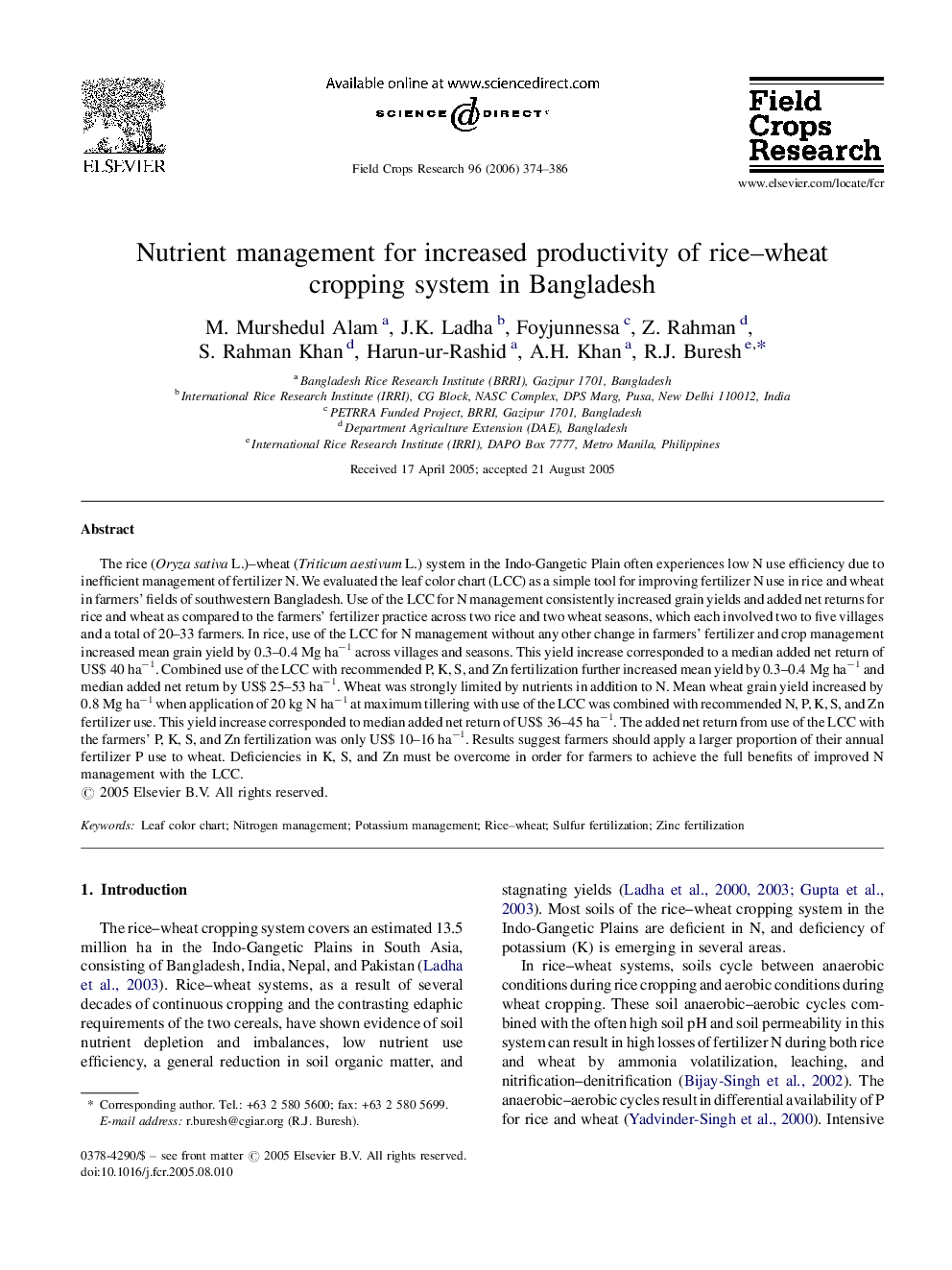| Article ID | Journal | Published Year | Pages | File Type |
|---|---|---|---|---|
| 4511830 | Field Crops Research | 2006 | 13 Pages |
The rice (Oryza sativa L.)–wheat (Triticum aestivum L.) system in the Indo-Gangetic Plain often experiences low N use efficiency due to inefficient management of fertilizer N. We evaluated the leaf color chart (LCC) as a simple tool for improving fertilizer N use in rice and wheat in farmers’ fields of southwestern Bangladesh. Use of the LCC for N management consistently increased grain yields and added net returns for rice and wheat as compared to the farmers’ fertilizer practice across two rice and two wheat seasons, which each involved two to five villages and a total of 20–33 farmers. In rice, use of the LCC for N management without any other change in farmers’ fertilizer and crop management increased mean grain yield by 0.3–0.4 Mg ha−1 across villages and seasons. This yield increase corresponded to a median added net return of US$ 40 ha−1. Combined use of the LCC with recommended P, K, S, and Zn fertilization further increased mean yield by 0.3–0.4 Mg ha−1 and median added net return by US$ 25–53 ha−1. Wheat was strongly limited by nutrients in addition to N. Mean wheat grain yield increased by 0.8 Mg ha−1 when application of 20 kg N ha−1 at maximum tillering with use of the LCC was combined with recommended N, P, K, S, and Zn fertilizer use. This yield increase corresponded to median added net return of US$ 36–45 ha−1. The added net return from use of the LCC with the farmers’ P, K, S, and Zn fertilization was only US$ 10–16 ha−1. Results suggest farmers should apply a larger proportion of their annual fertilizer P use to wheat. Deficiencies in K, S, and Zn must be overcome in order for farmers to achieve the full benefits of improved N management with the LCC.
